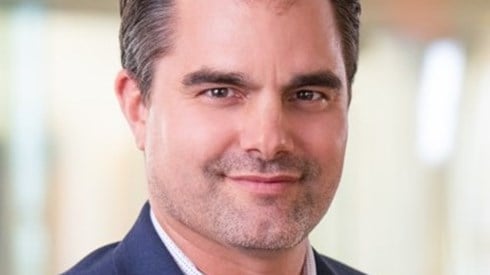Spring's Peter Johnson Discusses Captive Industry Trends and Issues

November 17, 2021

Peter Johnson is chief property and casualty actuary in the Charleston, South Carolina, office of Spring Consulting Group. Spring Consulting provides a wide range of strategic, technical, and actuarial services to employers, as well as overall financing and funding solutions for employee benefit programs, including the use of captive insurance companies. Mr. Johnson has more than 17 years of actuarial experience in reserving, pricing, alternative risk organization, captive feasibility, and reinsurance risk transfer work. In this interview, Mr. Johnson discusses various issues, including the challenges and opportunities facing captives and their owners today.
When did you start your work in the captive space? What did you do before? Did you have any surprises about the captive industry? What is your current title?
I started in 2007 with a large consulting firm working on various captive accounts ranging from mortgage reinsurance captives to a large healthcare captive insuring workers compensation and professional liability exposure. Out of college, I began my career as a pricing actuarial analyst at Allstate supporting their independent agency business. Regarding captives, I didn't realize at the time that an entire industry of regulators and service professionals worked to service captives as a core function of their job. I started with Spring Consulting Group (now an Alera Group Company) 5 years ago, and my current role/title is chief property and casualty actuary.
As chief property and casualty actuary, what are your responsibilities with Spring Consulting? Are there any unique aspects about the captive consulting work Spring does? How has your role changed since Alera Group acquired Spring?
In addition to a traditional actuarial consulting role, my role is to support our property and casualty (P&C) growth within Spring and my broader Alera Group across the United States. My day-to-day work includes both traditional actuarial consulting work, such as loss reserving, pricing, and retention studies, and more captive-specific work, such as supporting domicile regulators with the regulation of captives and performing captive feasibility studies for midmarket to Fortune 50-type companies. Spring's actuarial and consulting team expands across all property and casualty and benefits lines so our models and approaches to performing feasibility studies and other captive work are unique in that our team functions as a single unit for a client across all lines.
My role hasn't changed too much, but some of my day-to-day work is now coming in through Alera agencies, be it retention studies or captive feasibility studies.
Over the past couple of years, how has your professional work experience been through the pandemic?
At the start of the pandemic, admittedly, I was a little nervous, since the attention of our captive clients was drawn to dealing with immediate issues related to the pandemic. Fortunately, things quickly changed and with the hardening market forces we became very busy with captive expansion and new formation consulting work. Alera's growth into the P&C market has been a blessing in disguise. I've had the opportunity to grow internal relationships within the Alera brokerage network and provide a niche skill set of product offerings to many of our brokers who didn't previously have good access to captive and actuarial consulting capabilities. Fortunately, this growth has led to the hiring of additional staff to support our firm's growing client base.
I realize you and your team perform a lot of captive feasibility-related work and work closely with various captive domiciles on captive application reviews. Over the last couple of years, have there been any notable trends into what goes into captive feasibility studies?
Spring's captive feasibility studies have always been extremely comprehensive in nature and focused on encompassing qualitative and comprehensive aspects. In light of the various questions being raised by the Internal Revenue Service (IRS) and courts, we have spent considerable time and effort educating stakeholders on the importance of a comprehensive study. We are starting to see that the industry is learning and regulators that are reviewing feasibility studies are pushing back and are asking for a lot more support, especially around risk distribution requirements. In fact, actuaries are now being asked to perform statistic tests via simulation methodology to support evidence that the law of large numbers is sufficient in a captive's insurance profile. This wasn't done 5 years ago.
Can you speak more to risk distribution and why this has evolved to be an important component of a captive feasibility study?
Over the years, various captive court cases have come out to help define what is a viable insurance company. In handling these cases, the courts have consistently outlined the following parameters in determining what constitutes an insurance arrangement:
- Must involve insurable risks
- Must shift risk of loss to the insurer
- Must distribute the risk among its policyholders
- Must qualify as insurance in the commonly accepted sense
These and other fact patterns are certainly all important, but risk distribution has often been a sticking point since the IRS has focused on this as one of the key items, in part due to the subjective nature of its definition (in my opinion!). According to the Le Gierse case, risk distribution relates to the law of large numbers, but what does this really mean? Several safe harbors have been established over the years, such as having at least 50 percent third-party risk or the 12 brother-sister entity structure, and actuaries are now being asked to support risk distribution with statistical test support. Claim frequency is the driving force behind showing the law of large numbers exists. Since claim frequency (claim count per exposure unit) can vary significantly by coverage, risk type, geography, etc., it becomes an actuarial exercise by the nature of the definition.
Looking more broadly, what are some of the challenges captives and their owners/parent companies face today?
Reduced coverage capacity of various lines, such as excess liability/umbrella or cyber, is a big issue. Companies face either going uninsured or taking additional risk layers in their captives. Large insurer premium rate increases are also an issue. These issues do change quite a bit for certain businesses and by geography. For example, the healthcare industry has been hit harder by cyber-pricing increases and decreasing insurer capacity than other business types. Tax treatment is also an ever-changing issue. Circling back to the idea of risk distribution, if a company doesn't have sufficient risk distribution, it won't have tax-deductible premiums. Procurement tax may or may not be a concern, depending on where the captive parent's insureds' exposure resides and the captive domicile.
What are your thoughts on major opportunities for captives today?
For companies willing to take a step back as an organization and start viewing their risk and benefits programs in the aggregate, there are likely various ways to create efficiencies, greater transparency, and more favorable pricing of insurance over the long term. This is in addition to the various other qualitative benefits, such as improved risk management and a better line of sight for managing insurance costs.
What have you enjoyed most about being a captive consultant and actuary?
I enjoy the community of professionals I've been able to surround myself with. The day-to-day variability in work I'm involved with is challenging, in a good way, so it's very enjoyable from one day to the next. One day I may be working on an interesting captive application review for a domicile, the next I may be focused on putting out a client emergency related to their captive program, and the next day I may be creating a fantasy simulation model to predict the financial outcome for a captive across a spectrum of many different property and casualty and benefits risks.
How do you see risks taken on by captives changing in the years ahead? How have your clients' priorities shifted?
I speculate that captives will continue to be at the forefront of insuring emerging risks, such as pandemic coverage and cyber-related risk, as these risks emerge. Insurance companies generally have lagged behind the captive space in responding to changes for many reasons. Some changes will likely include insurance solutions indirectly/directly related to driverless car and other new technologies. This will impact both personal and commercial lines automobile. Risk is also changing for companies' workers compensation exposure as more and more companies are having their employees work from home either part time or full time.
Regarding my clients' priorities, finding the appropriate coverage capacity and reasonable pricing terms is certainly a priority. This is nothing new, but the focus on certain risks has changed with the changing market conditions. In the past, large umbrella limits could be purchased inexpensively, but most of our clients are seeing their premiums increase substantially and, in many cases, they are also experiencing shrinking limits and additional underwriting scrutiny.
Mr. Johnson is pictured above. (Courtesy photo.)
November 17, 2021




